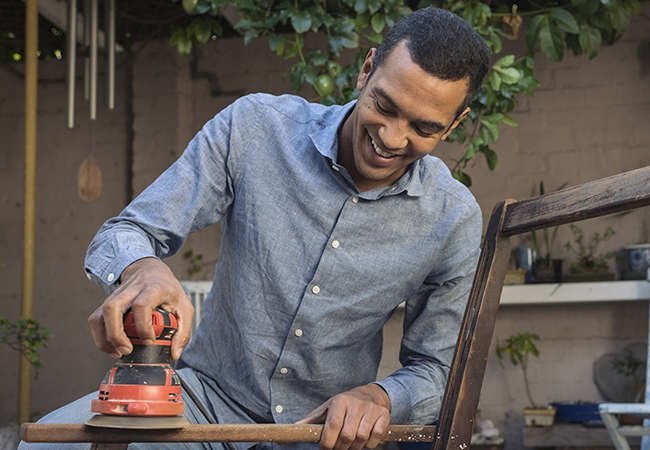

We may earn revenue from the products available on this page and participate in affiliate programs. Learn More ›
Home Advice You Can Trust
Tips, tricks & ideas for a better home and yard, delivered to your inbox daily.
By signing up you agree to our Terms of Service and Privacy Policy.
Home Hazardous Home
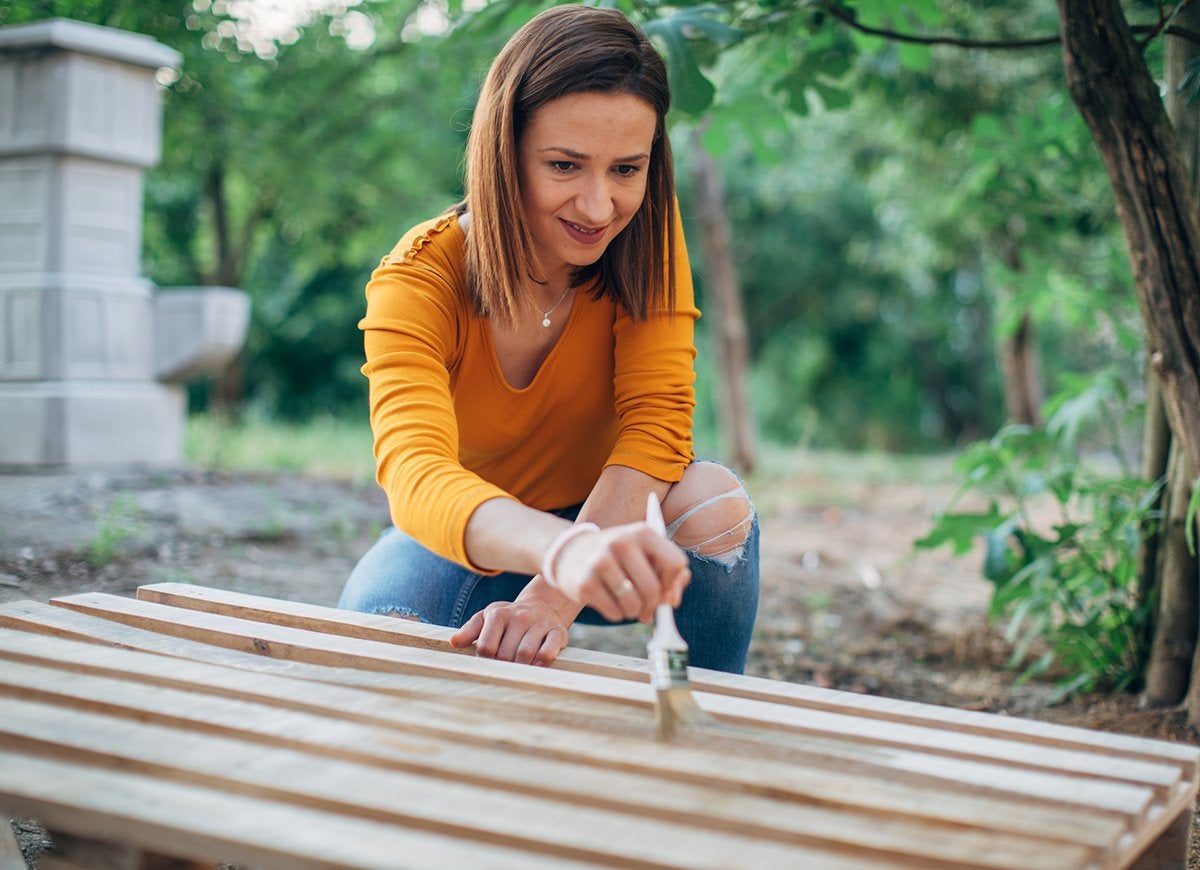
Protection from the elements, accessible electrical outlets, and an organized selection of tools are just a few of the benefits of working indoors. That said, the fumes, fire, dust, and debris generated when you’re working indoors can pose dangers to you and your house. To reduce this risk, always use proper ventilation techniques, wear appropriate personal protective equipment (PPE), and protect your home adequately. As well, remember that when you work inside, family members and pets can get in the way or become injured, so you need to be sure to block off the work area and advise others to avoid the work space. After you’ve taken all of these precautions into consideration, it’s easy to see why sometimes it’s simply easier to work outdoors. In fact, there are certain projects that are best done outside the home. Here are a few common projects that should always be done outdoors.
Wood Railing Repairs
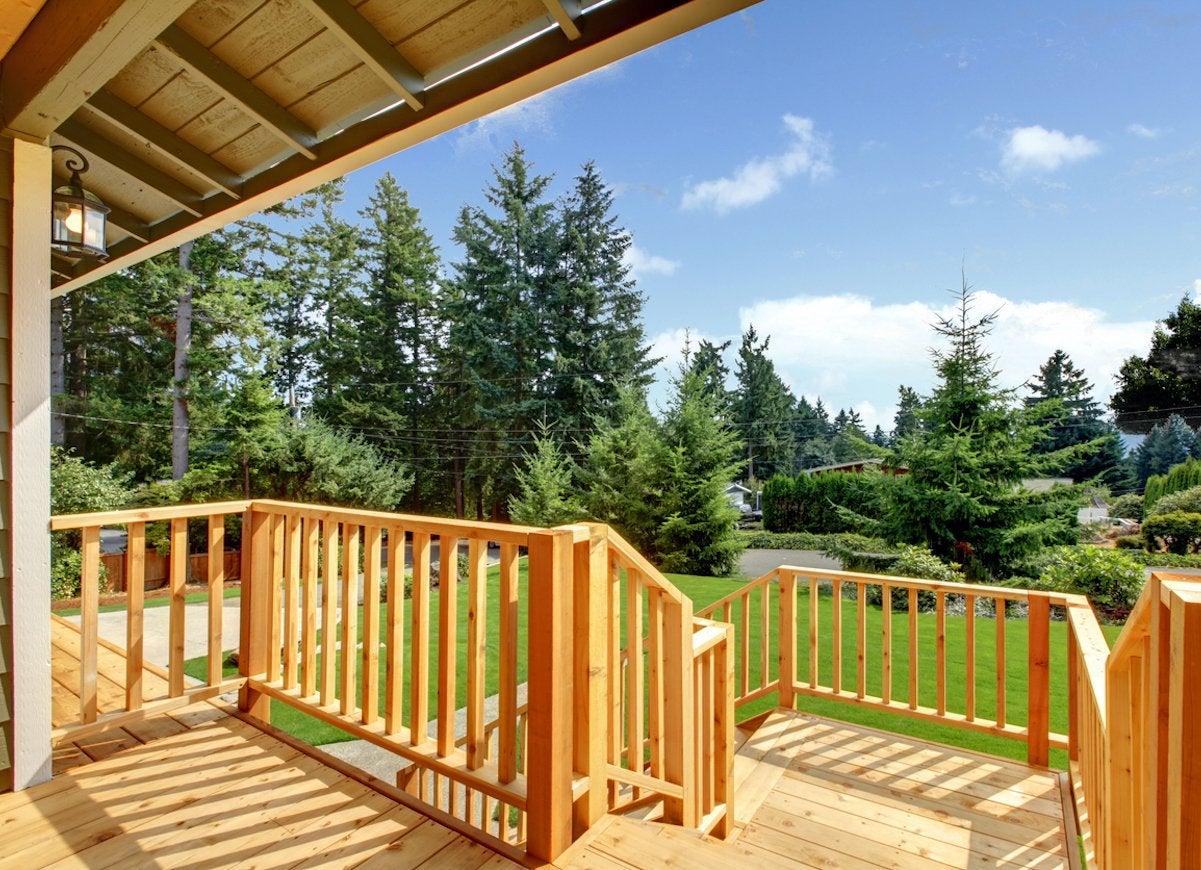
Most people would agree that building a deck is a project that should be done outside, but what about cutting a new railing or baluster? Maybe it would be OK to haul a piece of lumber into the basement or set up the saw in the kitchen to make a few quick cuts, but what is the benefit of doing so? Frankly, there’s really no benefit. The saw would create a noise hazard in a cramped space, forcing you to wear hearing protection, while the dust from the lumber would fly into the air, making a mess and becoming a breathing hazard. After you’ve made the cut, you’ll be taking the piece of wood outside to replace the broken or worn piece of railing, so it is clearly easier to avoid the hazards and the mess by cutting the wood outside to begin with.
Painting New Baseboards
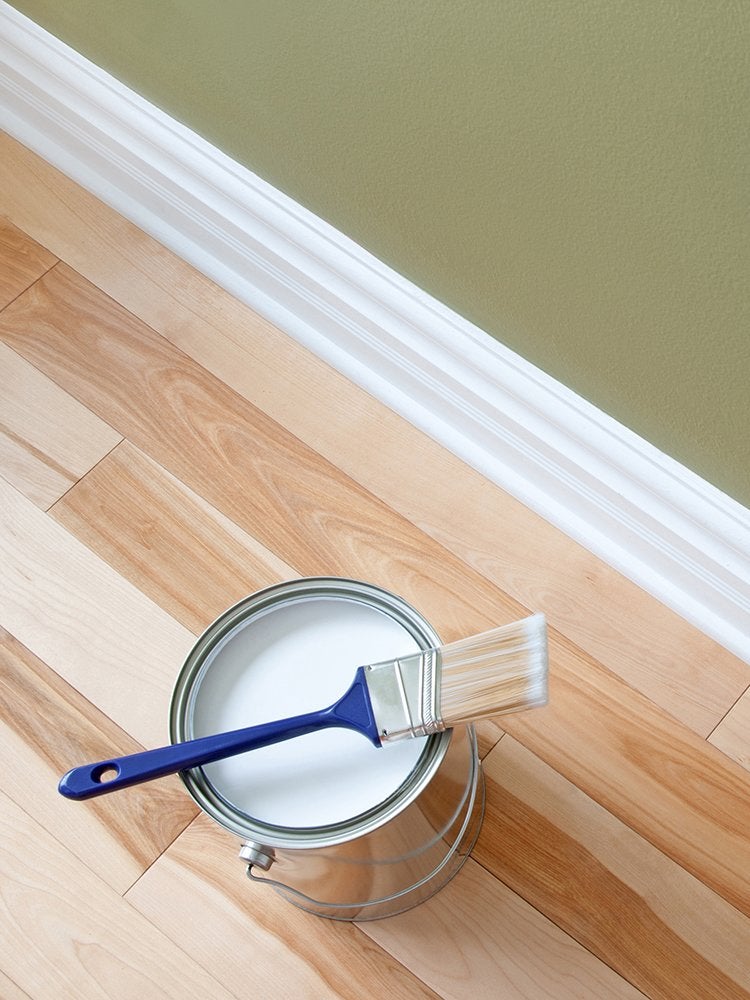
Baseboards run along the bottom of interior walls in many homes to conceal the joint between the floor and the base of the wall and create a stylish transition between the two surfaces. Replacing old and worn baseboards can be a great way to add a new look to a room without inflicting too much pain on the wallet. But painting the new baseboards inside the home can cause a mess and generate harmful fumes. Even after paint is dry to the touch, it can require between 24 to 72 hours to fully cure; during this time, paints that contain harmful volatile organic compounds (VOCs) are continually emitting them into the air. Whenever possible, paint new baseboards and let them dry outside the house. An even better option, particularly during very hot, very cold, or rainy weather, is to paint baseboards in a well-ventilated garage or outdoor workshop.
Mechanical Repairs
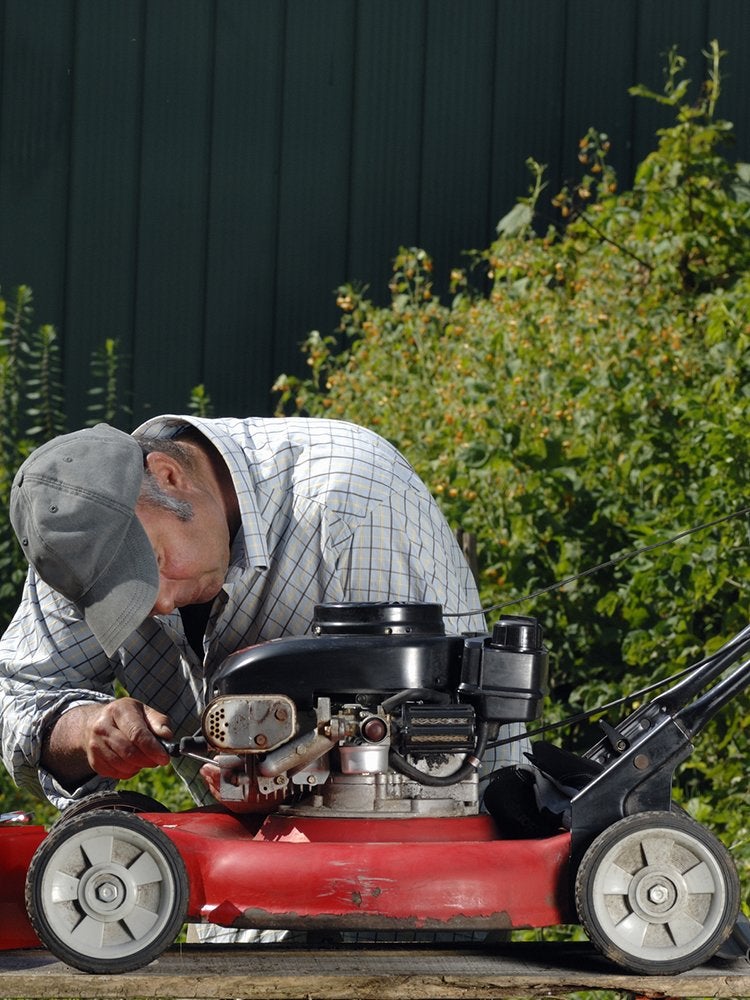
Repairs to a lawn mower engine or a drill are better done outside. While there may be better lighting or access to tools inside the house, you’ll need to spread drop cloths to protect floors, walls, and furniture from grease or oil, and other surfaces can still be marred by stray fingerprints and spills. As well, beyond the sheer mess that mechanical repairs can create, the devices themselves may contain potentially harmful chemicals that could be ingested by pets or children when you aren’t paying attention. If you set up outside, you’ll be less worried about dangers to humans and pets, less concerned about damage to surfaces, and more confident that you’ll be able to clean up drips, spills, and oily dirt.
Mixing Concrete
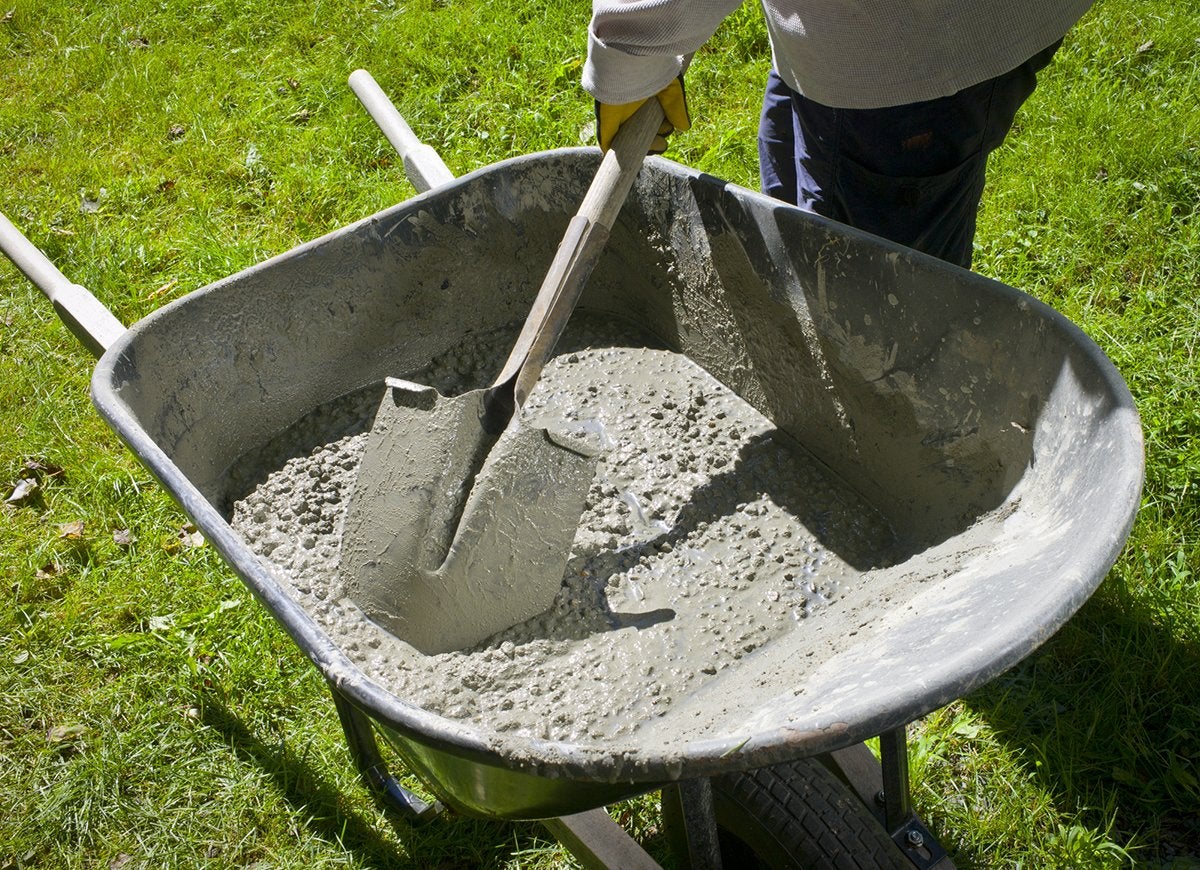
Concrete is used for many different applications, including installing fence posts and decks, and it’s generally mixed outdoors, using a concrete mix, a bucket, and water from the garden hose. If you don’t happen to have a garden hose, you might want to try moving this project indoors to be closer to a water source—but don’t! Mixing concrete can be a messy process, and the concrete dust in the air is hazardous. As well, filling a mixing bucket from a kitchen faucet, or dumping water into it while it’s sitting on the floor, comes with a high risk of spilling. Then, once you begin mixing the concrete, dust from the mix can rise into the air, where it can lead to eye, skin, and respiratory tract irritation. And when you’re done, you could end up with bits of concrete slurry scattered over the kitchen floor or countertops. To avoid all of these potential problems, mix concrete outside; if you don’t have a garden hose or other outdoor water source, bring water from indoors to mix with the concrete.
Cutting Tile
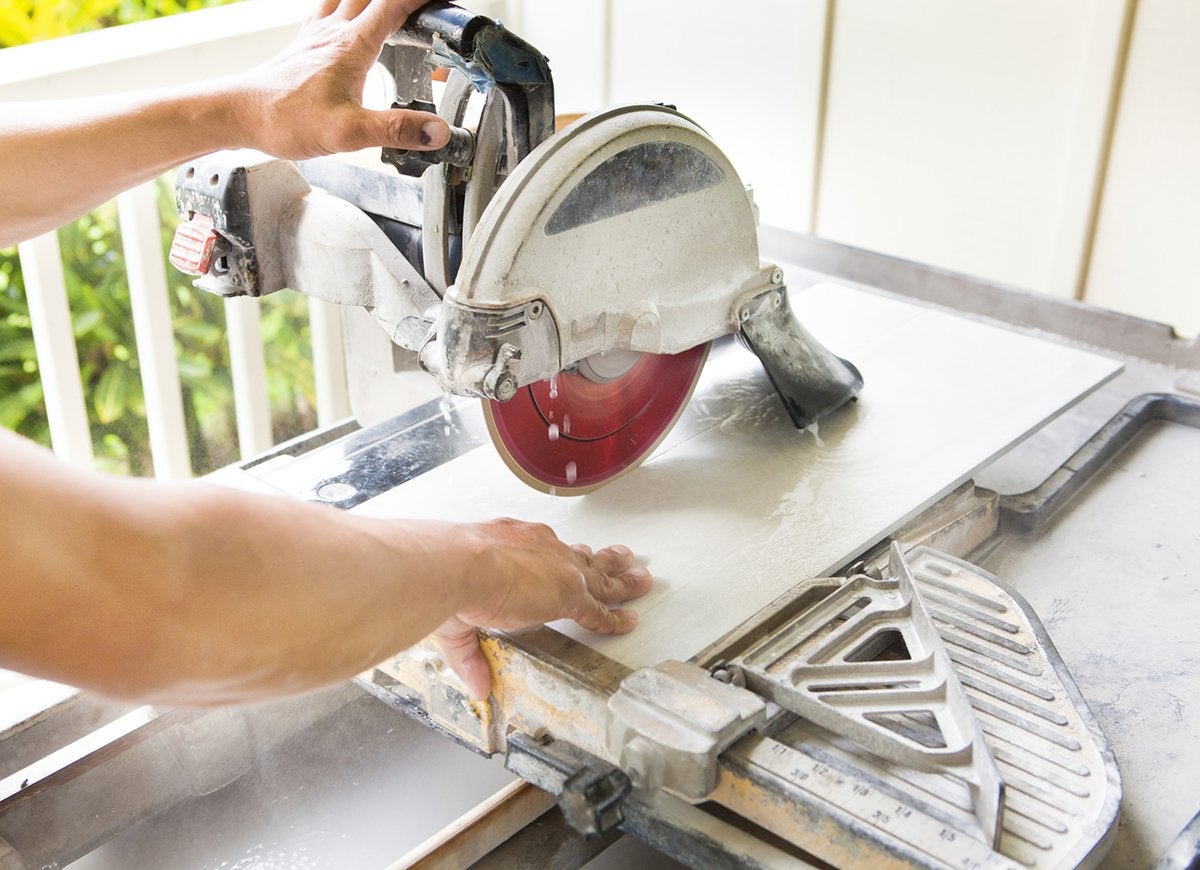
Any sort of tile work typically requires cutting tiles to fit. If you’re working on tile for a bathroom or kitchen, you may be tempted to set up the tile saw in a guest bedroom next to the bathroom, or in a basement workshop. But in an enclosed space, cutting tile can quickly become hazardous as trapped dust makes it difficult to breathe and the noise of the saw can cause hearing damage. Keep this task outside, where the natural light will make clean cuts easier, the ventilation will protect your lungs and help the noise dissipate, and the tools won’t be underfoot in a busy home.
Building a Coffee Table
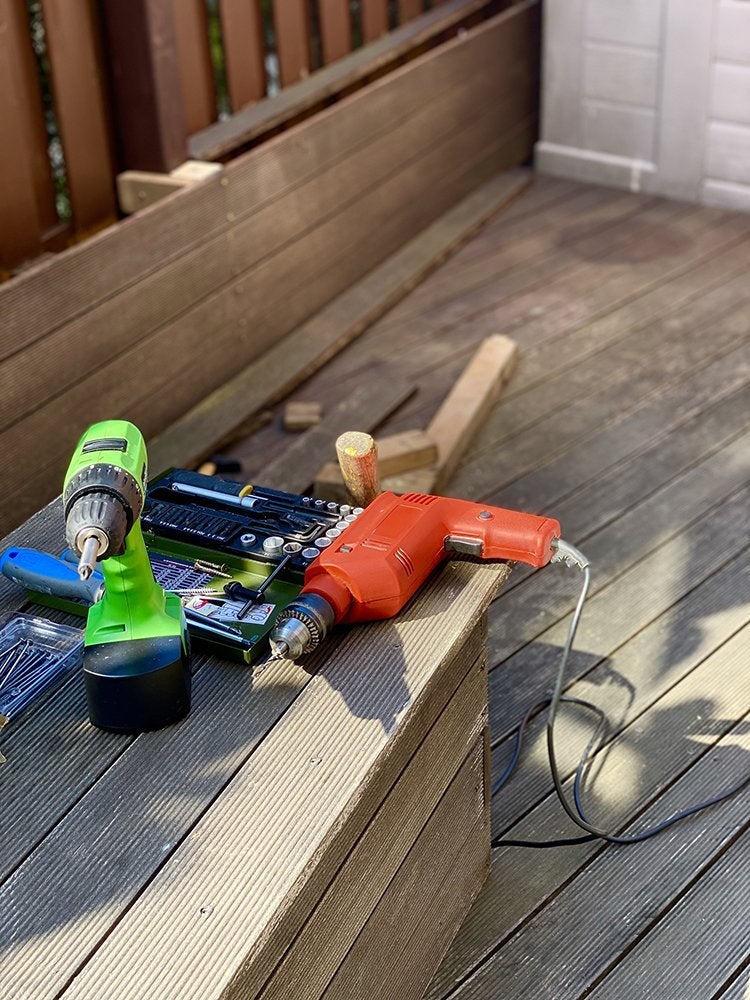
Quick projects, such as building a table or shelf, can be done with care and precision over a weekend, but do yourself a favor and keep the project outside until it is complete. Cutting wood indoors will trap the noise generated from the saw and can damage your hearing, while the wood dust produced is an irritant that can lead to wheezing or labored breathing, red and puffy eyes, or itching skin. Then, after the pieces have been cut, they will need to be sanded and stained, painted, or sealed, exposing you to yet more dust as well as VOCs. Instead of working indoors, set up a portable workbench outside, and do all your cuts, sanding, and staining in an open environment. Move the table to a well-ventilated garage or exterior shed for curing.
Soldering
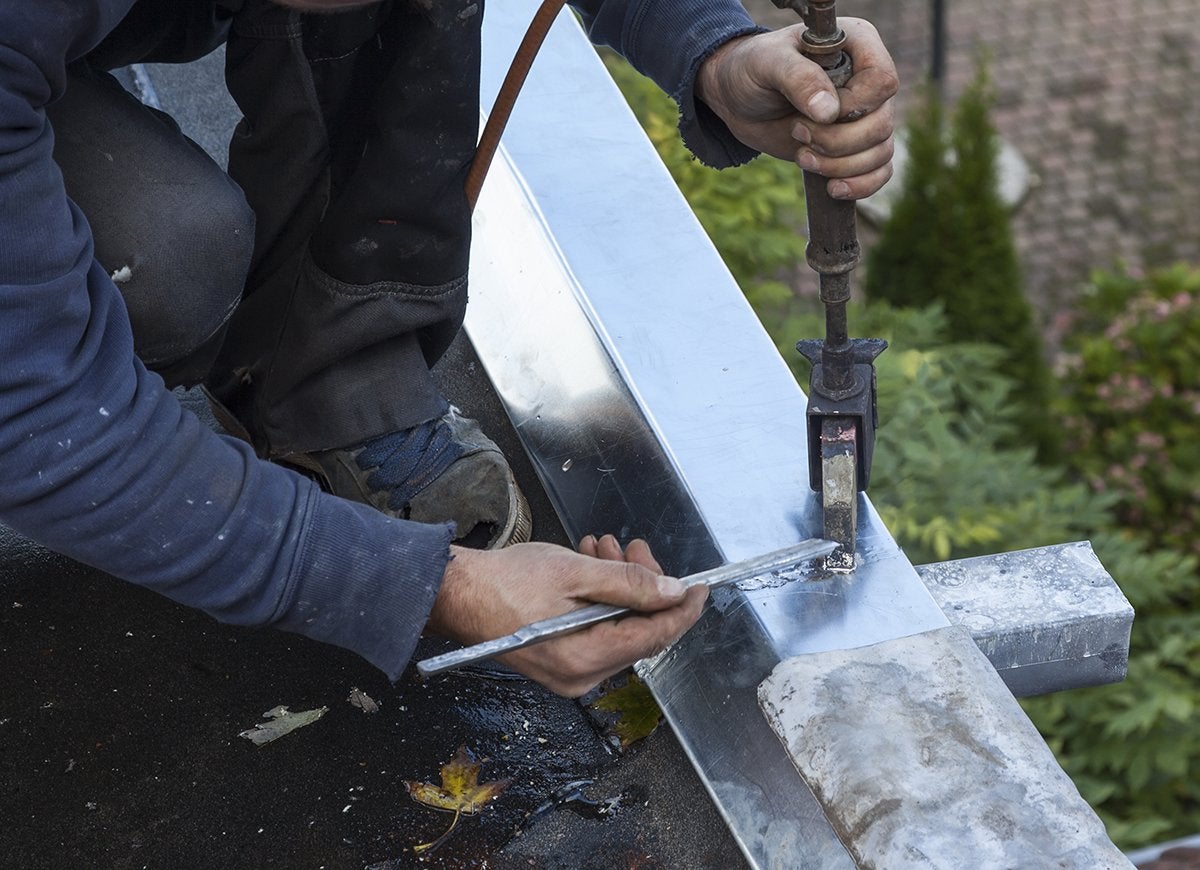
This entry may come as a surprise, because so much soldering is done on pipes inside the house. But consider what soldering is: You’re using a blowtorch to heat up a metallic compound (solder) until it melts enough to fill in gaps between two pieces of metal, creating a watertight seal. During the process, harmful fumes are released, and these can linger within a closed home environment. As well, the torch used to heat the solder presents a substantial fire hazard. While soldering inside is sometimes unavoidable, any soldering that can be done outside should be. Many fixtures can be prefabricated outside on a concrete driveway or in a well-ventilated garage to minimize the risks associated with soldering.
Grinding
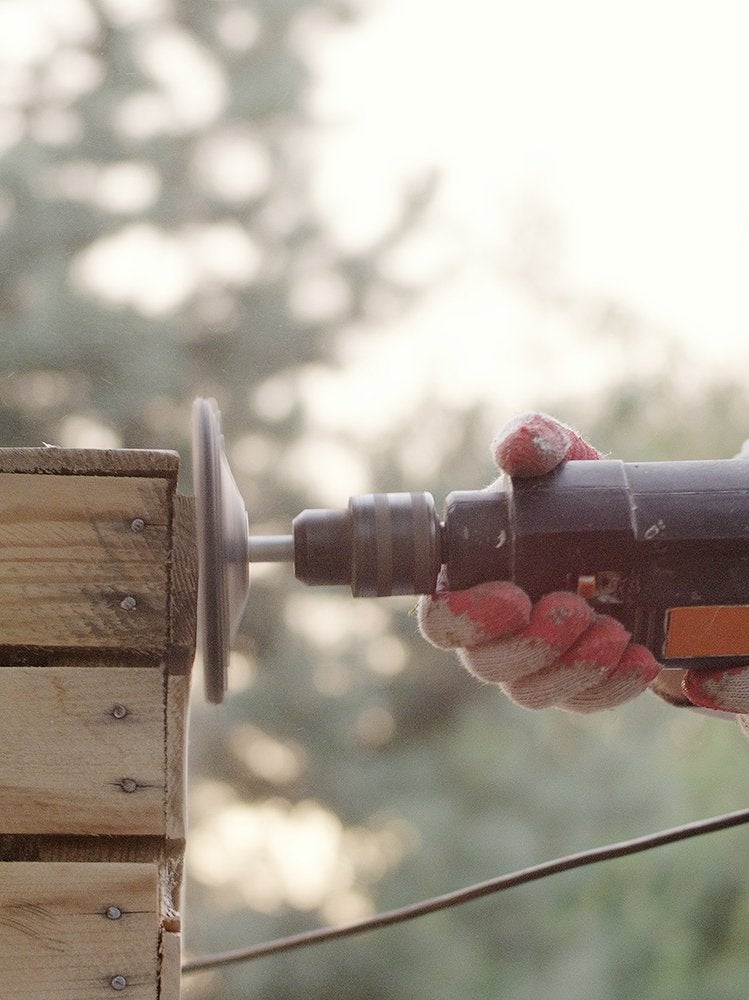
Grinders are handheld devices that have an abrasive or cutting wheel that can be used on a wide variety of materials, including metal, wood, and plastic. Cutting or grinding creates sparks that can fly in a wide arc and that could ignite flammable materials like furniture, curtains, and flooring. Grinders also produce sound loud enough to damage hearing and dust that can irritate the skin, eyes, and respiratory system. So, while there are a few projects that require using a grinder inside the home—for instance, cutting an aged water line—most projects that involve grinders should be moved outside to avoid the hazards that come with this tool.
Sanding
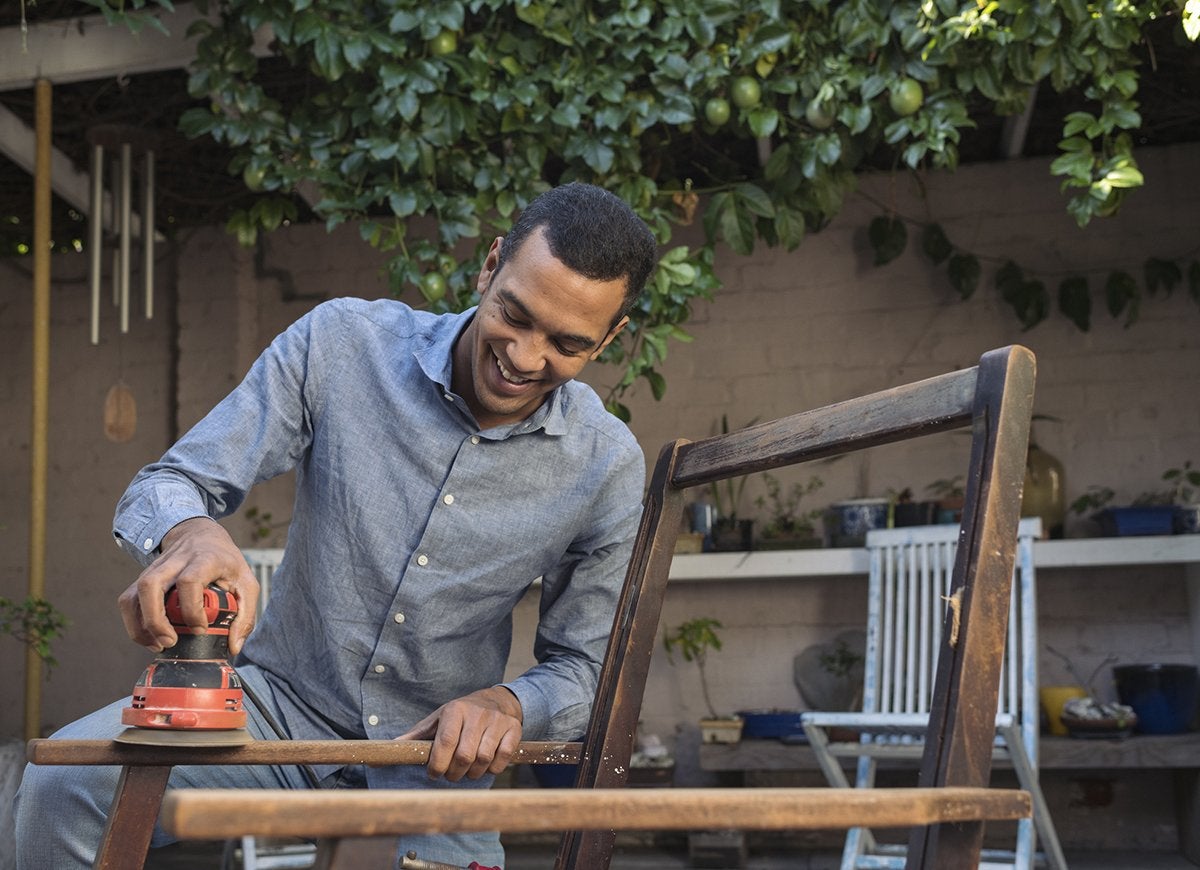
Any tool that produces dust should be used outside whenever possible, and a sander produces plenty of airborne debris and dust particles. Whether you’re working indoors or out, always use gloves, safety glasses, and respiratory protection to limit your exposure to dust while you’re sanding, and be sure to use ear protection. But even with protection, it’s best to take this task outside. A closed room doesn’t allow the sound to escape, and the reverberations increase the potential damage to your ears. Instead, set up a workbench on a patio or deck, or move this project into a well-ventilated garage. Even if you’re sanding something that will ultimately end up inside the house, doing the sanding outside will save on cleanup and prevent needless exposure to high levels of irritants.
Masonry
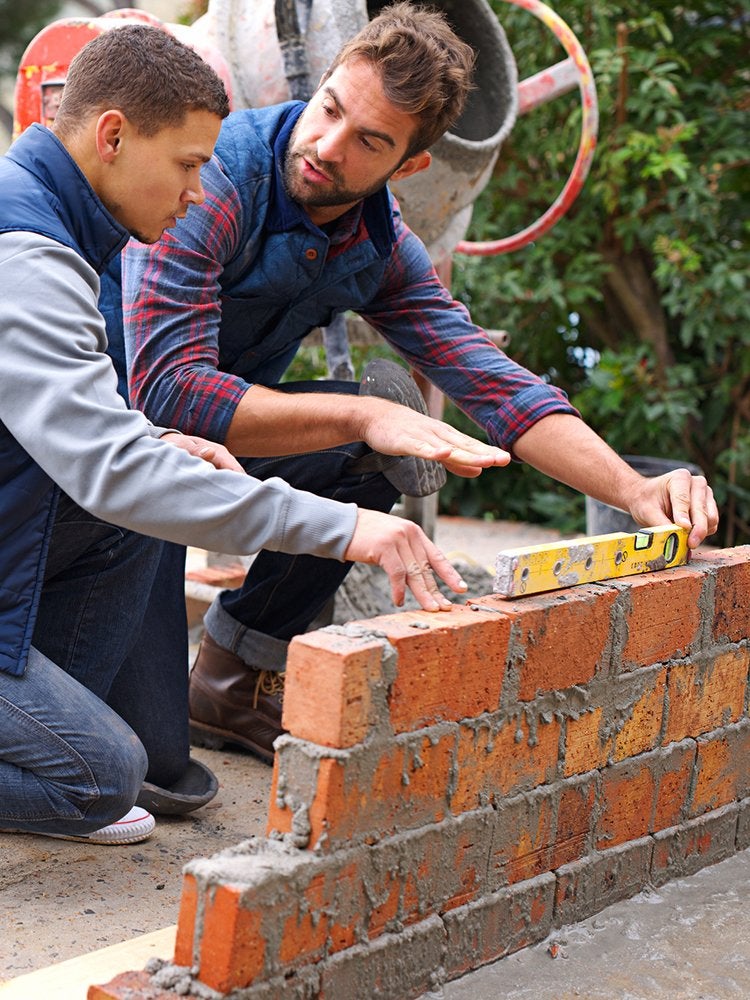
Cutting or grinding stone to create a fire pit or decorative garden box for the backyard is a project better done outside for several reasons. First, most masonry work is going to end up outside anyway, so it makes sense to set up the saw where you’re building the project. Second, masonry work produces dust and debris, and can even send small pieces of stone flying. Take your masonry projects outdoors to protect your health and protect the inside of your home from damage. Also, remember to work in a well-ventilated area and use proper protection for your eyes, ears, and lungs whenever you’re working with masonry.
Welding
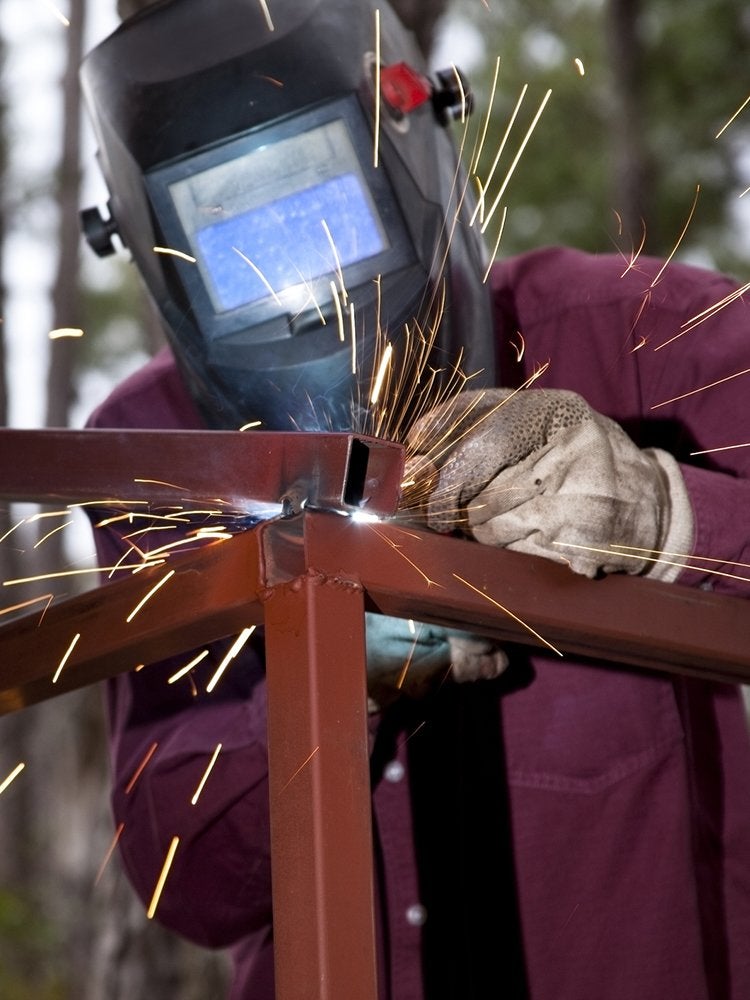
Welding torches come with a wide array of potential dangers. The sparks and splatter from the metal pose a considerable fire hazard, and the torch produces an intense ultraviolet light that can cause corneal burning from up to 50 feet away. So why would anyone use a welding torch inside? Most people don’t, but it can be tempting to head to a basement workshop to craft a small metal table, create a metal sculpture, or even just to practice welding on small pieces of metal. Resist the temptation: The fumes, sparks, and ultraviolet light produced by welding should be reason enough for moving this project outdoors, or to a shed or some other less vulnerable area.
Refinishing Furniture
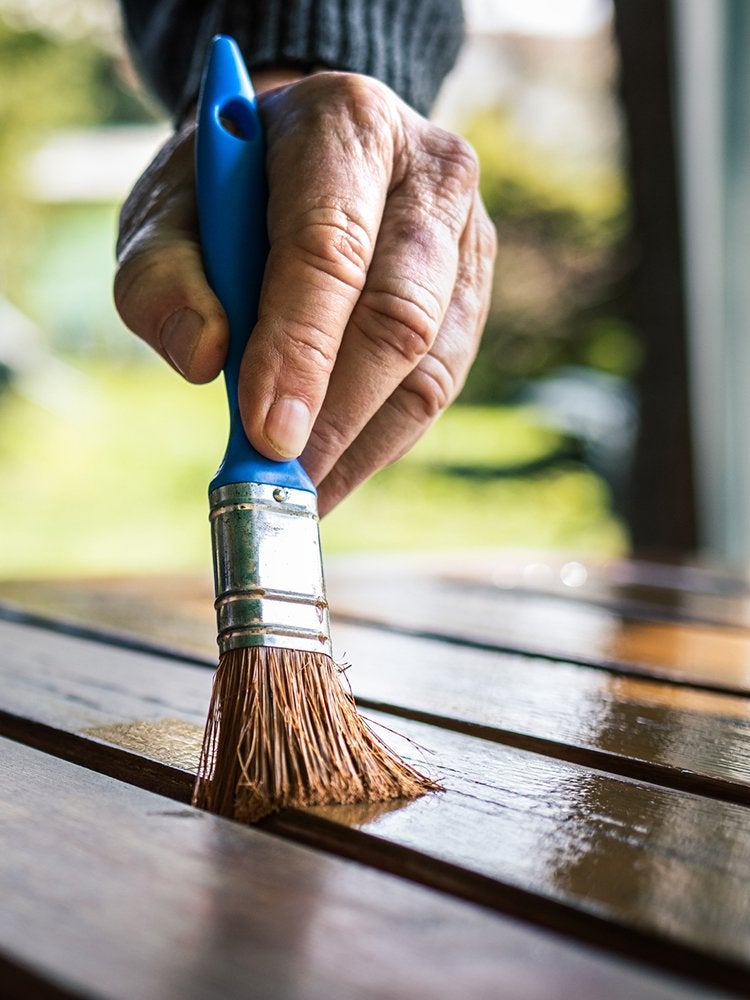
Taking an old, dated piece of furniture and turning it into something new and fresh is a wonderful way to spend a weekend. But the process requires sanding, which kicks up a lot of dust and debris that can make a real mess out of an enclosed area and lead to respiratory irritation. Always sand furniture outside, then apply stain, paint, or sealant (depending on the project) and allow it to dry and cure in a well-ventilated area like a garage or outdoor shed. Keeping your project outside the house while curing protects you and your loved ones from harmful fumes that can cause headaches, dizziness, and trouble sleeping.
Spray-Painting
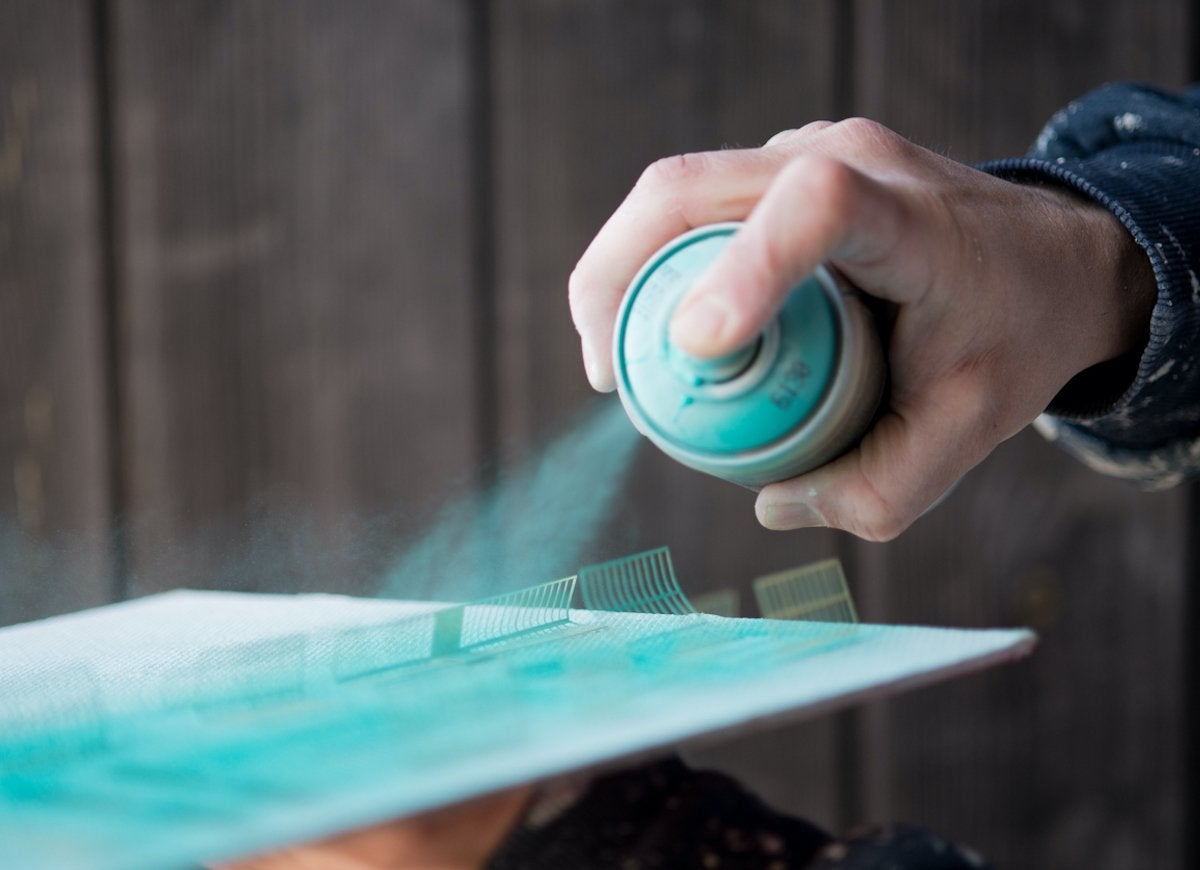
A coat of spray paint yields a smooth, amazing finish that just can’t be obtained with a brush. But spray-painting releases both paint and fumes in a cloud-like mist; while most of the paint settles on the object, the fumes drift off. Limit exposure to those fumes by moving your spray-painting project to a well-ventilated area. Not only will you protect your lungs, but you’ll be able to spray-paint over grass or some other easily protected surface without having to worry about cleaning up the overspray.
Cleaning Metal Grills

Grills can and should be removed from the barbecue and oven for cleaning, but they should never be cleaned indoors. The stuck-on grease, fat, and charred meat that typically collect on cooking grills can be removed with grill cleaners. But while these products make quick work of greasy messes, they can also give off powerful chemical fumes that can be damaging to your eyes, skin, throat, and respiratory system. Whenever possible, use these strong products outside. Your lungs will thank you.
Cutting Flooring
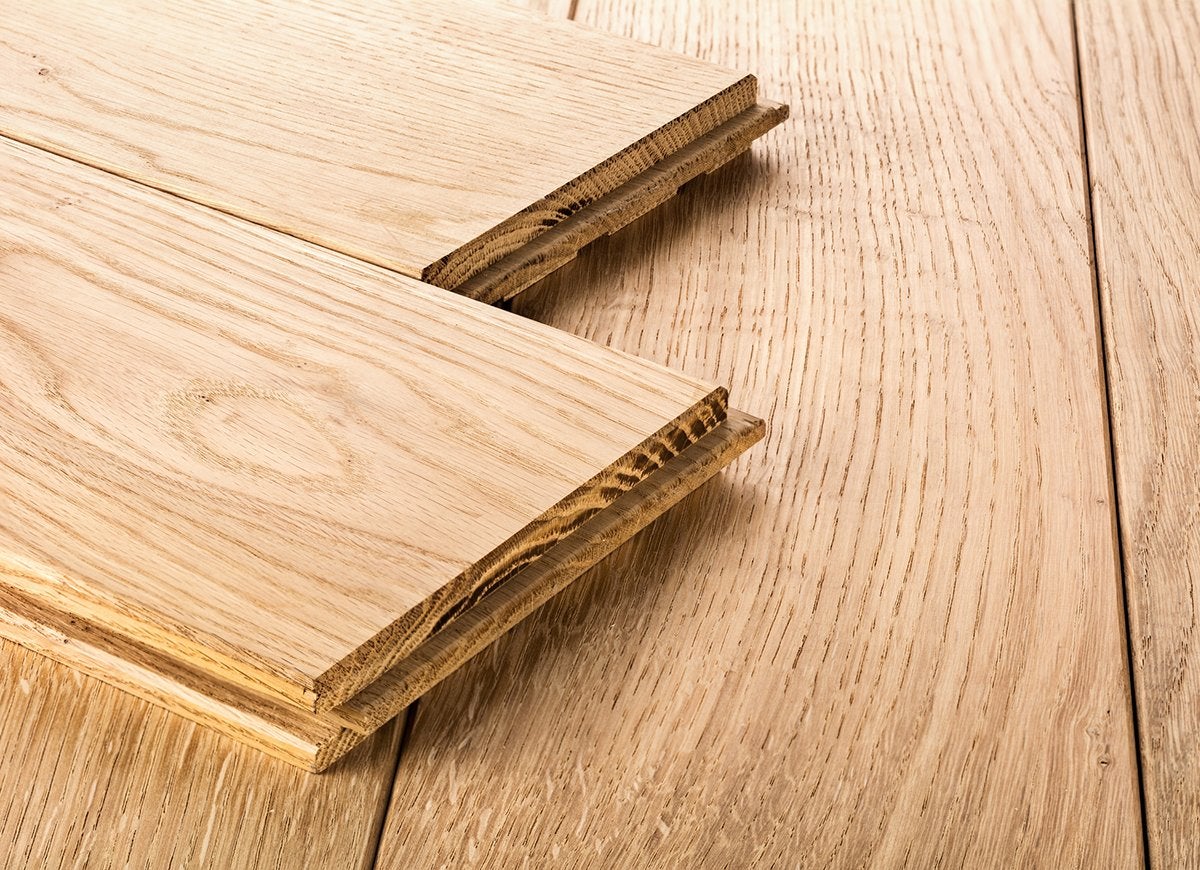
Whether you’re installing a hardwood or carpeted floor, you’ll need to cut the flooring material to size. For carpeting, you won’t need a noisy power tool, but the process isn’t exactly neat, either. Strings and stray fibers will end up all over the floor and will need to be cleaned up. As well, cutting carpeting releases VOCs into the air. Always wear respiratory protection when working with carpeting, and when possible, do some of the cutting outdoors, where the natural ventilation will keep your lungs safer. Hardwood floors require cutting with a saw, which creates noise and releases dust and debris into the air. When possible, make these cuts outdoors, and always wear protective gear.
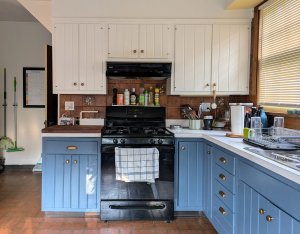
I Was Dead Set On Stone Floors—Until I Saw These Options
See how a virtual floor designer might just change how you envision your floors, as it did for this editor with her ongoing kitchen renovation.